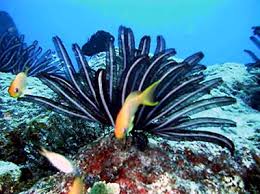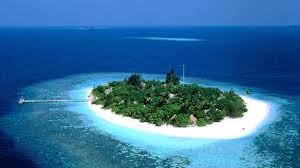[THIRUVANANTHAPURAM] Kerala: The local government in Lakshadweep is alarmed on learning about a scientific report of sea erosion degrading the Lakshadweep Archipelago, known as India’s island paradise. The administration announced steps to reduce dependence on fossil fuels on the islands and conserve its coral reefs.
Lakshadweep with its 36 islands forms the northern part of the Chagos – Maldives – Laccadive Ridge and lie 400 kilometres off the Indian coast. With a total area of 32 square kilometres, the centrally-administered territory supports a population of 70,000 people.
The stability of these islands are threatened, says comprehensive study of the Lakshadweep islands by the National Centre for Earth Sciences Study (NCESS), Thiruvananthapuram. Severe coastal erosion by natural factors such as high wave activity, strong winds and tidal currents, as well as human activity threatens this popular tourist destination.
T.N. Prakash, head of coastal processes research at NCESS and lead author of the Springer study, says that the “rare aquatic biodiversity and vast blue lagoons of the islands”, which are the main tourist draw, are also at risk from cyclones and deep depressions. A balance has to be found between conservation and tourism, described officially as the ‘engine’ for socio-economic development of the islands.
Sheela Nair, researcher for the study, says that while short-term shoreline changes are seasonal, long-term changes need to be countered using layers of tetrapods, hollow concrete blocks and coir bags filled with pebbles — though these may hamper the fishing and tourism industries.
Coral reefs, lagoons and mangroves have already suffered from dredging activities for port development. Fisheries, inadequate sewage and solid waste treatment and unscientific tourism promotion on the islands are also contributing to the degradation, she says.

Published in ‘Springer Briefs in Earth Sciences – 2015’, the study has assessed the extent of erosion and suggests remedial measures that include reduced dependence on diesel for power generation and protection of the beaches.
Less diesel-More wave-power
The announcements made by the Lakshadweep administration on reducing diesel consumption and carbon emission include generating up to five megawatts of electricity with subsidies provided by the central government with the support of the UNDP’s GEF Biomass Power Project.
‘Wave power generation’ is also an alternative. Prakash says that the cost of wave power generation is comparable to the present cost of shipping diesel from the Indian mainland to the islands.
P. Kurian, scientist and member of the board of studies in physical oceanography at the Cochin University of Science and Technology, said the study is important for the fact that it “looks into the prospects and advantages of renewable energy sources like biomass, solar, wind and wave for multi-source power generation systems on the islands.”
The administration plans to popularise energy saving devices and appliances such as LED lighting systems powered by solar energy on the streets and in homes. Battery operated vehicles now plying on the islands are also due to be recharged off a solar grid.
“While considering the limitation of resources in Lakshadweep, a new management policy with indigenous initiatives, a good mix of administration and science and technology inputs can be of immense help to the islands,” says Prakash.



The beach is not just a favourite holiday destination, it’s our favourite place to live.
But due to human intervation,Coral bleaching, rising sea levels, changing species distributions – global warming and climate change are already having a marked affect on the oceans….
Roll no-15
BMC- I
MAYANK PAL Singh